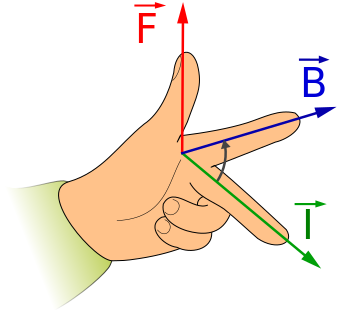The Motor Effect¶
When a conductor carrying an electric current is placed within a magnetic field, the magnet producing the field and the conductor will exert a force on each other (as the conductor will also have its own magnetic field). They will either attract or repel each other depending on the orientations of them.
Increasing the strength of the current, the strength of the magnet, or the length of the wire will increase the force exerted on the wire.
An example use of the motor effect is in speakers.
Fleming's Left Hand Rule¶
To establish which direction the force will be exerted on the wire, you can use Fleming's Left Hand Rule.
Using Fleming's Left Hand Rule: the Thumb represents the direction of the Force (F); the 1st finger represents the direction of the magnetic field (B); and the 2nd finger represents the direction of the current (I).

Fleming's Left Hand Rule Illustration by User:Jfmelero / CC-BY-SA 3.0.
Except as otherwise noted, the content of this page is licenced under the Creative Commons Attribution 4.0 License, and code samples are licensed under the Mozilla Public License 2.0.